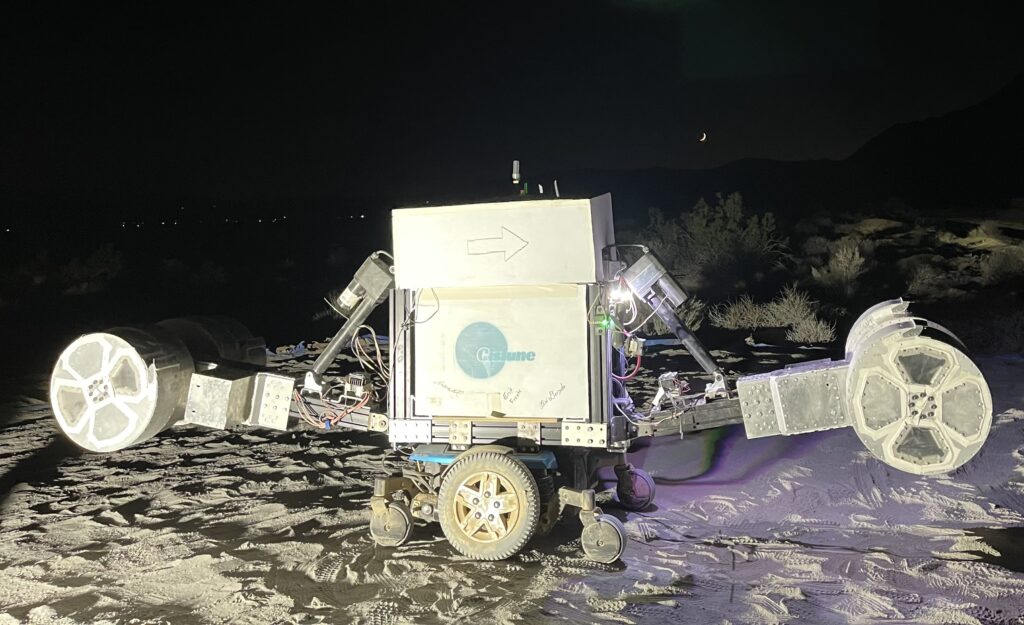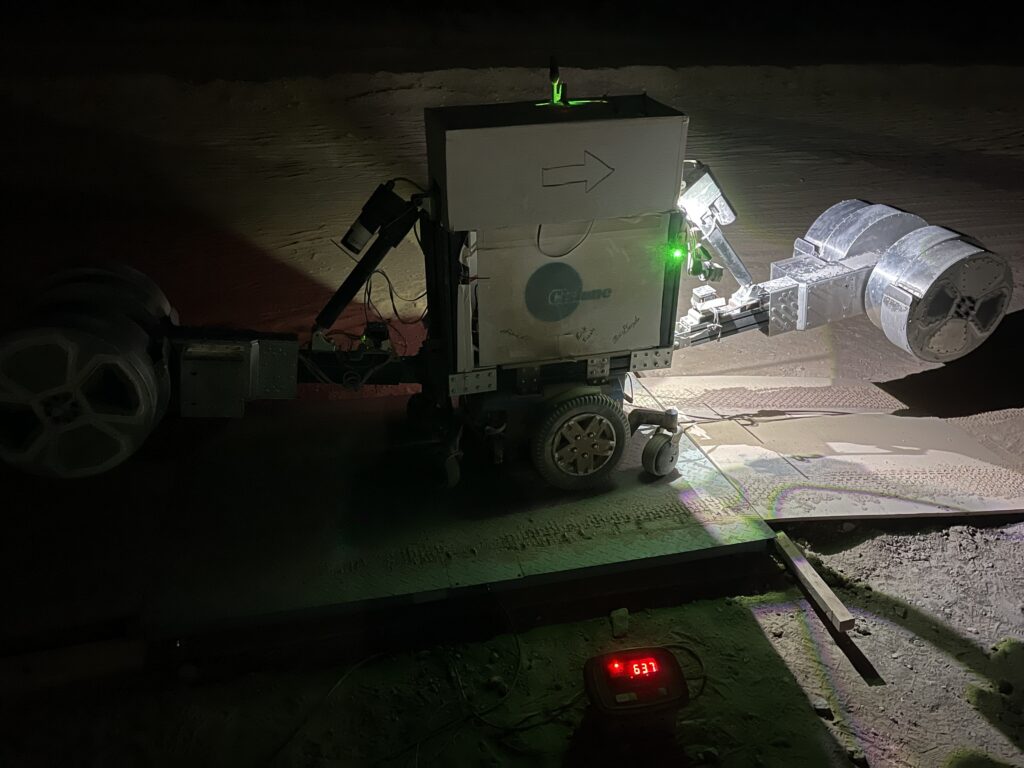On September 25, 2023 the Cislune team completed their run of the NASA Break the Ice Challenge competition, bringing them one step closer to sustainable lunar exploration. The California space start-up tested their lunar regolith excavator for 15 long days in the Mojave desert excavating over 3280kg (7231 lbs).
The challenge was live streamed on the start-ups YouTube channel and the team remained on-site for the entire period supervising the excavation.
Cislune chose the arid region of Lucerne Valley at LUNARPLEX to simulate the icy surface of the Moon’s poles, pouring 22,200kg (48502 lbs) of low-strength concrete to emulate the water ice laden lunar regolith expected to be found in the shadowed regions there. Four Cislune teammates worked in shifts to supervise their autonomous excavator throughout the process.
The rover uses a bucket drum design to simultaneously break up and capture material. When its drums are full, approximately every 2 hours, it drives 500 meters with its load to a delivery site. The excavated quantity is weighed on a scale and then emptied. The prototype then drives 500 more meters to return to the excavation area where the process begins again. They completed 77 excavation, transit, and deliveries of icy regolith simulant over 15 days, driving 87km (54 miles).

The competition was more than just a simulation for the excavator, it was a simulation of a surface team operating, maintaining, and supervising the process. The Cislune team lived and worked at the test site for 3 weeks in a camper the team affectionately nicknamed “The Hab”. The first week was dedicated to preparation and testing with the last two for the competition itself.
The Mojave desert is a brutal place for testing. The air is very dry, it’s blazing hot during the day, frigid at night, and the frequent strong and gusty winds only exacerbate the challenging conditions. The sand and and concrete dust coats everything, not just the rover, but the team too.
Luke Farrell, the Mechanical Lead for the project, says that the most difficult part is the dryness of the air. The team set up several tents to try and beat the heat, but there’s only so much to be done against the hot desert sun. Despite this, the team persevered. The landscape and the heat of the desert are more Martian than lunar, but the icy regolith simulant they excavated occurs on both planets. “Ice is a critical resource for both lunar settlement and for in-space refueling of satellites and spacecraft in Earth orbit.”, according to the Cislune post on X dated September 13, 2023.
The team iterated on the equipment design and excavation approach each day, utilizing the tools and spare components they brought onsite to iteratively improve capabilities. The efficiency improvements of the prototype became more and more convincing as the excavated daily quantities kept increasing, as shown by the graph Cislune posted on X on September 20. The team “excavated 2154 kg of lunar icy regolith simulant” in 10 days. The changes they made brought their yield from barely 20 kg on the first day to over 400kg on the 10th day, a 20 fold increase.

Despite the challenges, the team faced them head on and managed to pull together a solution that not only met, but exceeded expectations.
The next step is Level 3 of the competition that NASA is hosting next May. The top prize goes from $300k to $1M. Cislune has planned several improvements to their rover for this phase and the team is looking forward to what comes next.
By: Emmanuelle Franks with CaliFrenchLife

